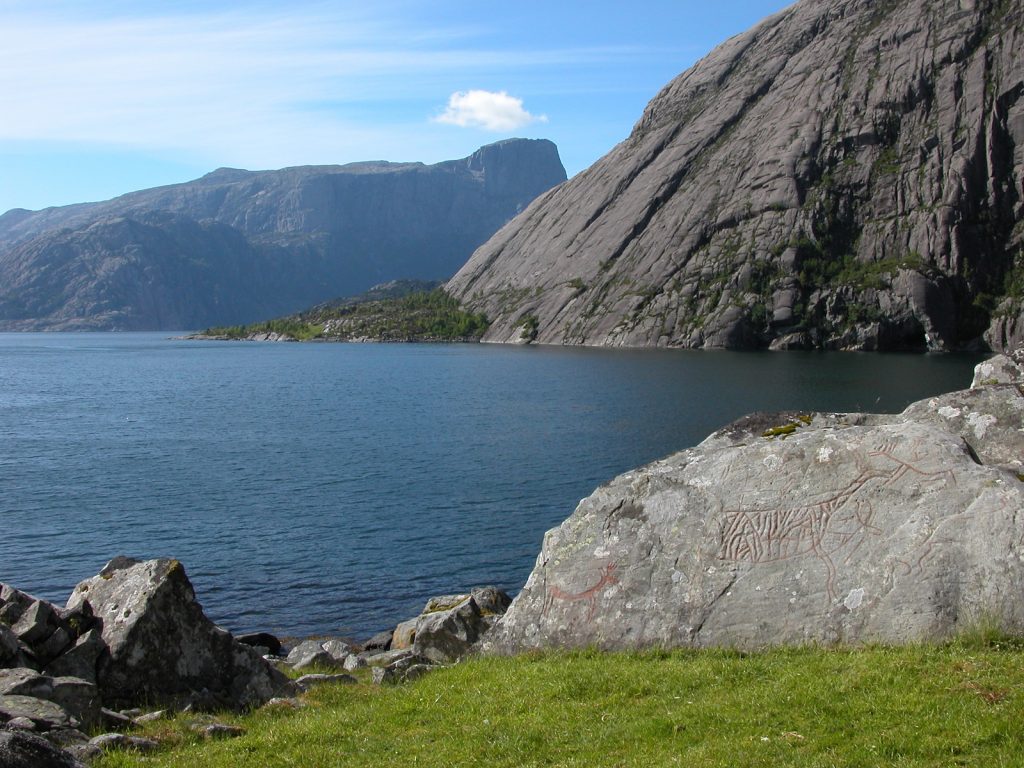Archaeology & History
Norwegian Archaeologists Outraged as 6,000-Year-Old Rock Art Is Put at Risk
Over 2,000 Stone Age carvings could be damaged if plans for a new quarry on the Aksla mountain go ahead.

Over 2,000 Stone Age carvings could be damaged if plans for a new quarry on the Aksla mountain go ahead.

Jo Lawson-Tancred

The fight to protect a site filled with 6,000-year-old rock art in Norway has found major institutional backing after the International Council on Monuments and Sites (ICOMOS) issued a Heritage Alert. The NGO is calling for local government to dissolve its plans to develop a stone quarry on the nearby Aksla mountain, which risks damaging the precious Mesolithic art and its surrounding landscape.
The ancient rock carvings sit within the impressively unspoiled landscape of the Vingen fjord in western Norway. More than 2,000 Stone Age petroglyphs of local fauna like red deer and sea mammals are engraved into boulders and exposed panels of rock. As of 2016, archaeologists are still making new discoveries at the site, which measures over one square mile and has been strictly protected since 1980. The wider fjord has no roads and is only accessible via boat, remaining more or less unchanged since prehistoric times.
Proposals for the industrial development of a sandstone quarry at the peak of Aksla were met with dismay by many locals and international rock art experts alike. The Norwegian Environmental Protection Association and Norway’s ministry of climate and environment both formally objected but, in February, the local council of Bermanger approved the plans anyway, claiming that the development would provide local jobs.

The Vingen rock art site, with renderings of some of the petroglyphs there. Courtesy The Vingen rock art site, with one of the petroglyphs visible in the foreground. Photo courtesy Trond Lødøen.
In a new letter addressed to Norway’s prime minister, its parliament, its ministry of climate and environment, and the local Municipality of Bremanger, ICOMOS urged the latter body to withdrawn its prior approval of the quarry.
Explaining that the prehistoric artworks “may be understood as a pictorial language, providing a unique insight into past narratives,” it highlighted the construction of a new shipping port for the transportation of sandstone as well as the inevitable dust and noise pollution associated with the new quarry as two outcomes that would forever alter the site.
“The impact assessment analysis underestimates the negative effects it will have on the natural and cultural environment,” the letter claims. “The new shipping port will cause irreparable damage to nature and loss of red-listed species.”
Finally, ICOMOS called for “a thorough and independent evaluation of possible alternative quarry and shipping port locations be undertaken, and that those charged with this assessment be provided with full information on the environmental and cultural values of the area.”